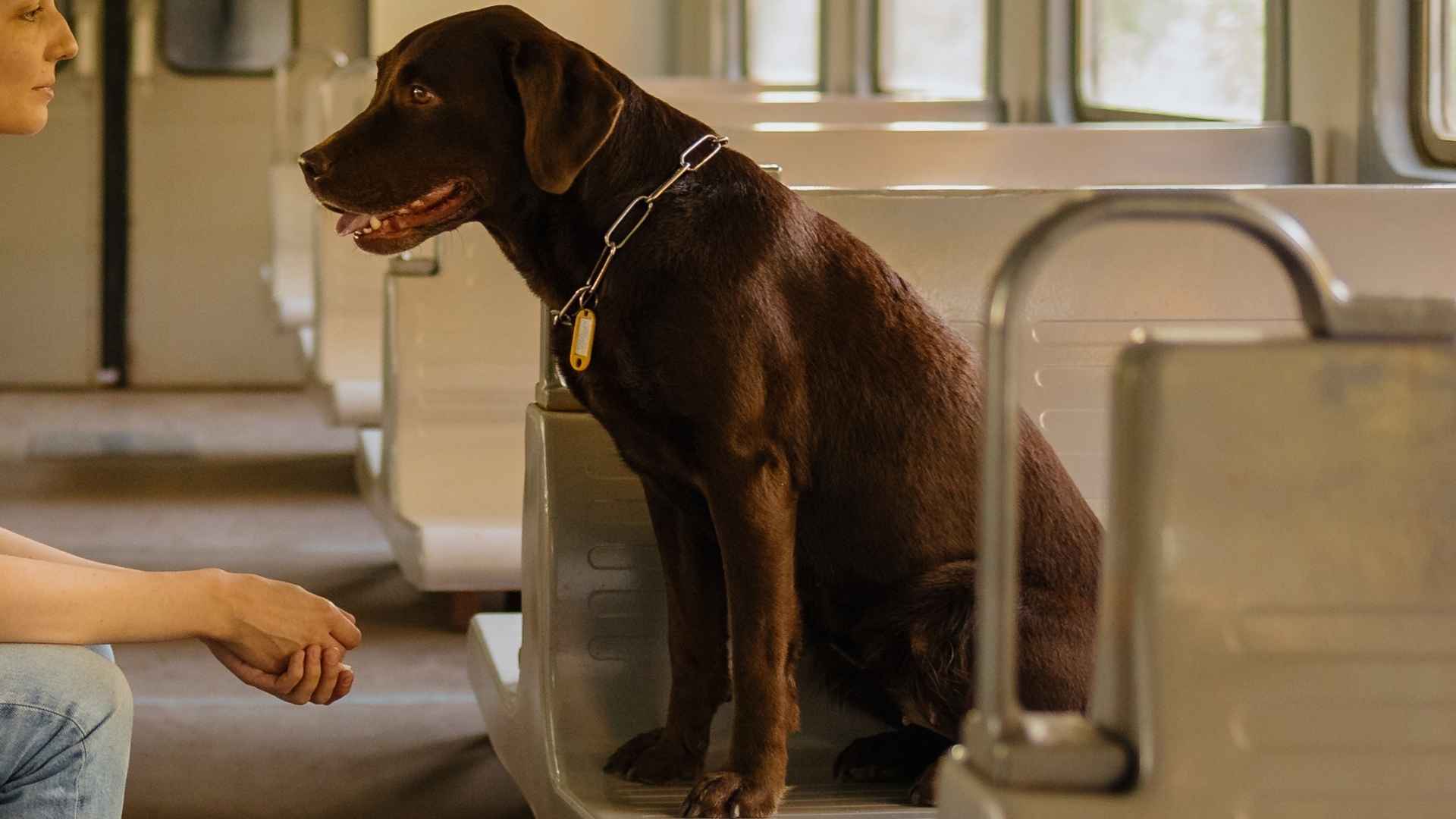Stepping aboard a train with your dog can be a surprisingly peaceful experience—if the breed cooperates. A 2025 dog‑travel survey found that dogs make up 58% of pets traveling worldwide, and most cope remarkably well with travel, including by train.
According to the American Kennel Club (AKC), subways and commuter rail systems across major cities regularly allow service dogs on board—even in high‑traffic situations—with few incidents of barking or agitation. That sets the stage for certain breeds that seem to genuinely enjoy the rhythmic click‑clack of rails rather than react nervously.
Some dogs just seem built for the ride. They handle the ambient noise, shifting scenery, and platform waits without making a fuss. They don’t sound alarms at every approaching tunnel or station door. Instead, they treat the journey like a slow-motion exercise: curious, composed, and content.
Dog Breeds That Enjoy Riding Trains Without Barking
Here are the 9 dog breeds:
1. Toy poodle
Regarding dog breeds that enjoy riding trains without barking, the Toy Poodle stands out—not just because of its compact size, but for its poise and smarts. These little dynamos handle travel with surprising confidence, provided they’re mentally stimulated and properly introduced to the environment.
Hypoallergenic and low-shedding: With a curly coat that doesn’t scatter fur all over the room, Toy Poodles are perfect for commuters who like their travel gear clean and tidy.
Incredibly intelligent: They’re quick learners who respond well to cues, making it easier to control their behavior in busy train settings.
Adaptable in tight spaces: Whether it’s a crowded platform or a cramped car, Toy Poodles handle it without losing their cool.
Social and affectionate: They treat everyone—from children to seniors—as a potential friend, yet they won’t jump on strangers or cause disruption.
Unique Traits
Smallest in the Poodle family, but loaded with personality.
Originally bred as water retrievers—yes, despite their fancy looks.
Coat colors range from bold black to gentle apricot, adding style to substance.
They’re prone to separation anxiety, so being close to their owners during travel makes them feel secure.
If under-stimulated, they may start barking, so keep a toy or treat handy to redirect that energy.
2. Italian Greyhound
The Italian Greyhound blends grace with stillness—traits that make it one of the top breeds that enjoy riding trains without barking. Instead of vocalizing like most dogs, they make a soft “rooing” sound, a yodel-like tone that’s far more endearing than disruptive.
Lightweight and compact: At just a few pounds, these dogs are easy to carry, whether you’re hopping staircases or squeezing through narrow train aisles.
Quiet travelers: Instead of barking, they express themselves with soft howls or rooing, rarely startling other dogs or commuters.
Low-shedding and sleek: Their short coat doesn’t shed heavily, keeping your lap and seat clean during long rides.
Unique Traits
A mix of calm and chase—they’re cuddly indoors but will dart after movement if not kept on a leash.
Not fans of the cold—their thin skin means they may need dog sweaters, especially if there’s a draft on the train.
Despite their dainty build, they clock speeds up to 25 mph, showing off their sprinting heritage.
They’re royalty-approved—favored by nobles from the ancient world, often painted into Renaissance art.
3. Shih Tzu
The Shih Tzu might look like it belongs on a velvet pillow, but it turns out this ancient companion breed is a rock-solid traveler, especially when it comes to trains. Bred for royalty, they’ve evolved into calm, adaptable sidekicks who enjoy staying close without making a scene.
Adapts to different environments: Whether you’re heading across town or across the country, this breed adjusts easily, making them perfect for busy commuters or families.
Friendly toward strangers: Their naturally social nature means they rarely bark at passengers, making them great companions in crowded cars.
Minimal shedding: Though their longer hair needs upkeep, it tends to stay on the dog, not on your lap or train seat.
Unique Traits
Known as the “Lion Dog,” with a signature chrysanthemum-like face and expressive, round eyes.
Bred purely for companionship, these dogs were never hunters or herders, just warm, fuzzy comfort in a palace or home.
Their brachycephalic (flat-faced) structure can make breathing a bit tricky in hot or crowded conditions, so it’s best to keep your browser open to find tips on traveling with short-snouted breeds.
Despite their toy size, they’re athletic, loving a brisk walk between station changes or a few stair sprints.
Low barkers by default, though they may sound the alarm at the door—but even then, it’s more of a chirp than a full barkfest.
4. Cavalier King Charles Spaniel

If ever a dog was made for cozy window seats and calm companionship, it’s the Cavalier King Charles Spaniel. With royal roots and an endlessly affectionate nature, this breed checks nearly every box for train-friendly travel without the noise or stress.
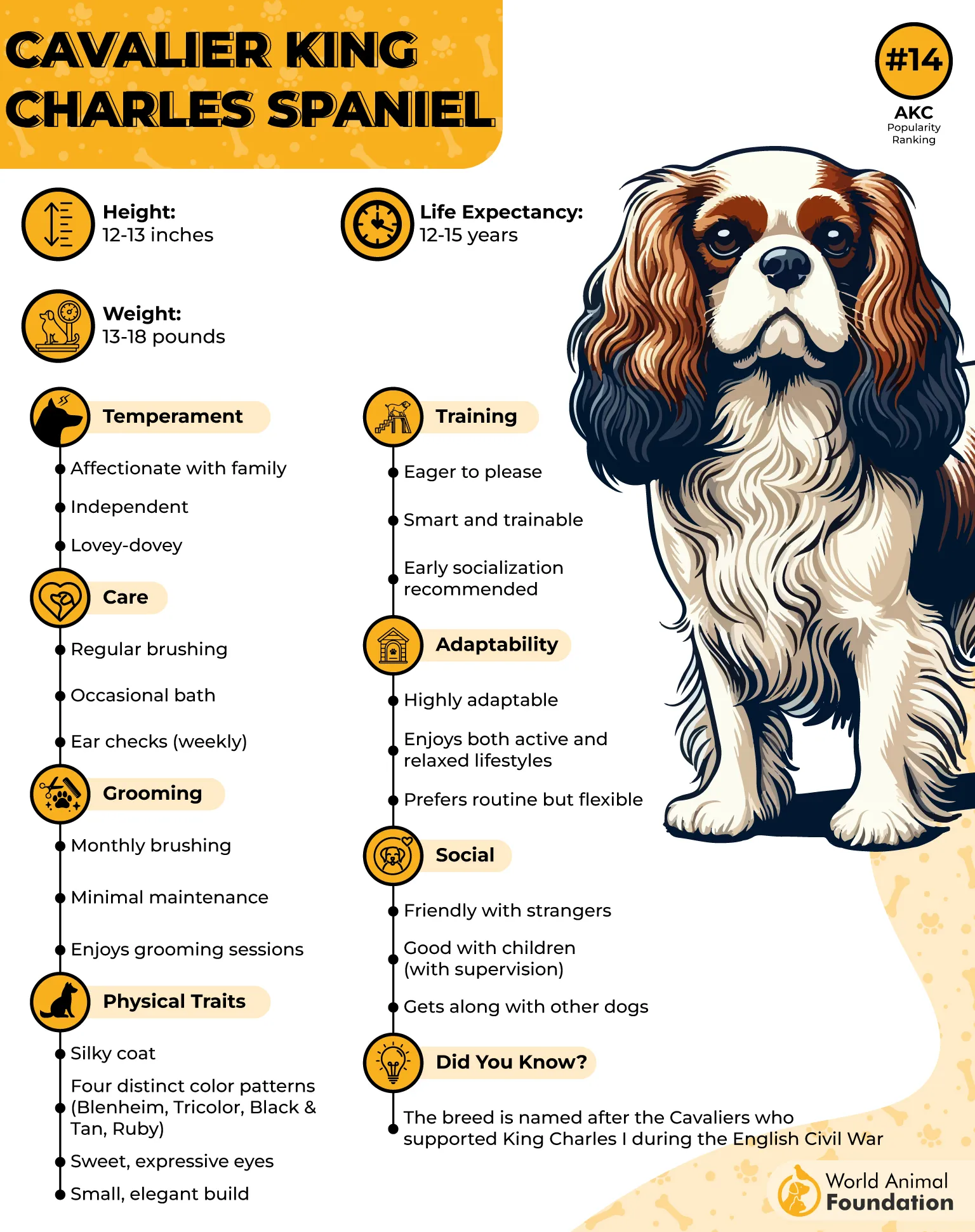
Exceptionally well-mannered: They’re typically quiet and well-behaved, making them ideal for tight, shared spaces where barking isn’t welcome.
Social yet calm: Cavaliers enjoy saying hello but know how to stay quiet during long rides, even when surrounded by strangers or kids.
Compact but not fragile: They’re easy to lift, set by your feet, or carry in a soft crate without fuss or resistance.
People-pleasers: They love to follow your lead, especially if you’re relaxed and giving gentle guidance with a soft leash.
Unique Traits
A favorite of King Charles II, who famously decreed they be allowed in public spaces, even Parliament.
Their silky coat needs regular brushing, but it doesn’t shed uncontrollably.
They do have a natural chase instinct, so they should stay leashed in open spaces to avoid accidental runaways.
5. Labrador Retriever
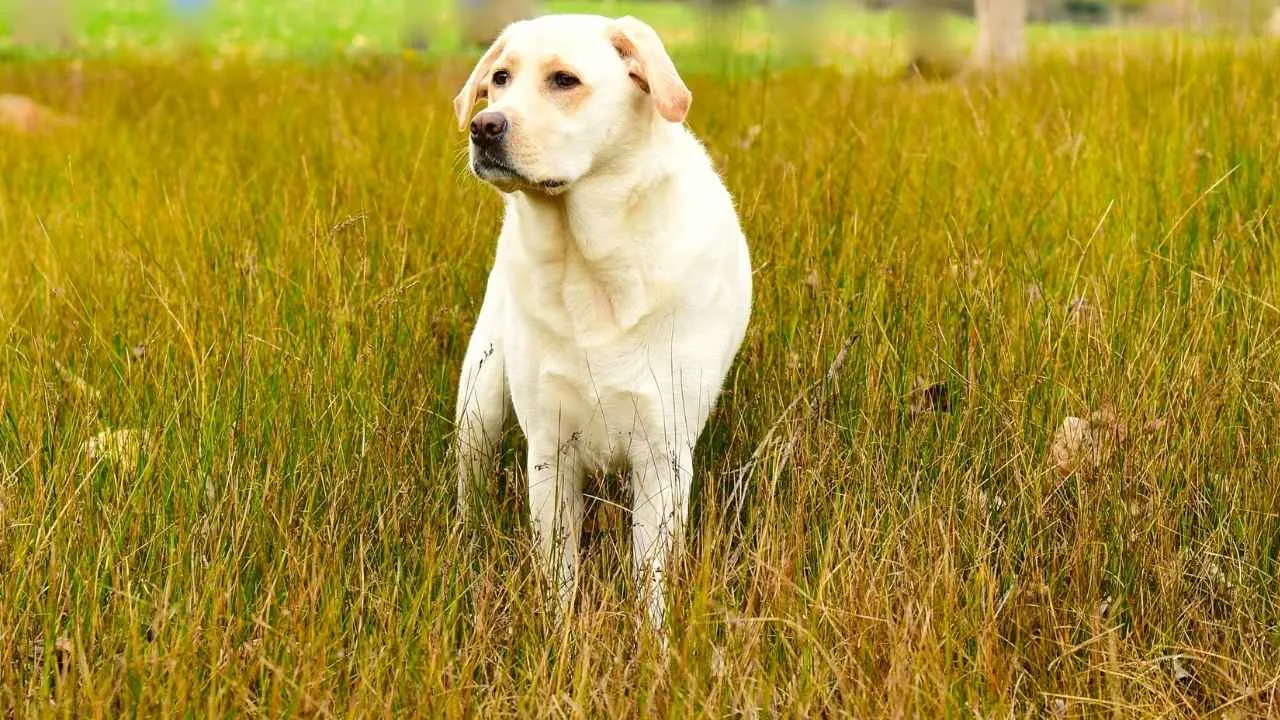
The Labrador Retriever is often thought of as a backyard ball-fetcher or family sofa-hog—but when it comes to train travel, this breed proves it’s got more to offer than just energy. Friendly and quick to learn, Labs are surprisingly well-suited for life on the move.
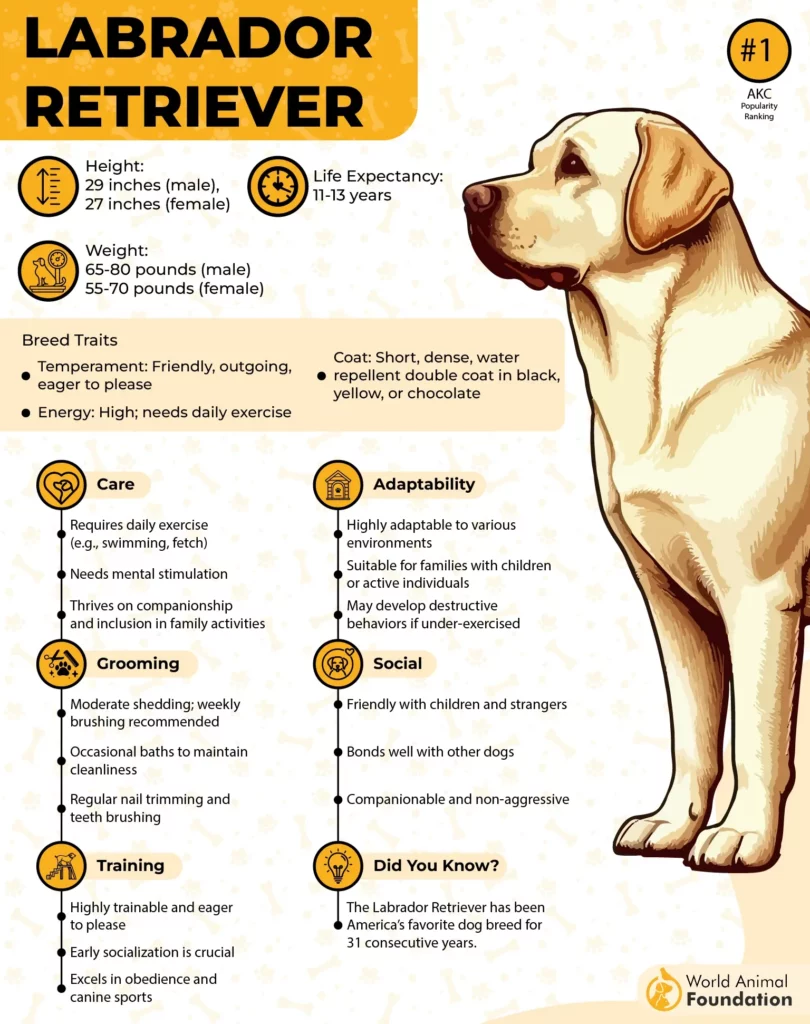
Calm under pressure: While some may expect dog barking from an energetic breed, most Labs stay impressively composed in public, especially when trained early.
Trained to ignore distractions: Their background as guide dogs makes them particularly good at staying focused, even in chaotic stations.
Motivated by rewards: A small bag of food or a few treats can keep them calm, attentive, and cooperative on long journeys.
Reliable routines: They thrive on habit, so if they’ve ridden a few times before, they’ll settle quickly and know what to expect.
Unique Traits
Originally bred in Newfoundland to retrieve fishing gear, which explains their love of water and their webbed feet.
According to PetMD, their “otter tail” acts like a rudder when swimming, and it also works great as a table-sweeper at home.
Labs are famously soft-mouthed—they can carry an egg in their jaws without cracking it.
Their incredible sense of smell makes them useful in dozens of roles, from sniffing out truffles to detecting illness.
Labs mature slowly, keeping that puppy energy well into adulthood, so bring a chew toy for longer train rides.
Most families prefer Labs for their temperament—they’re affectionate, loyal, and never short on love to give.
6. Great Dane
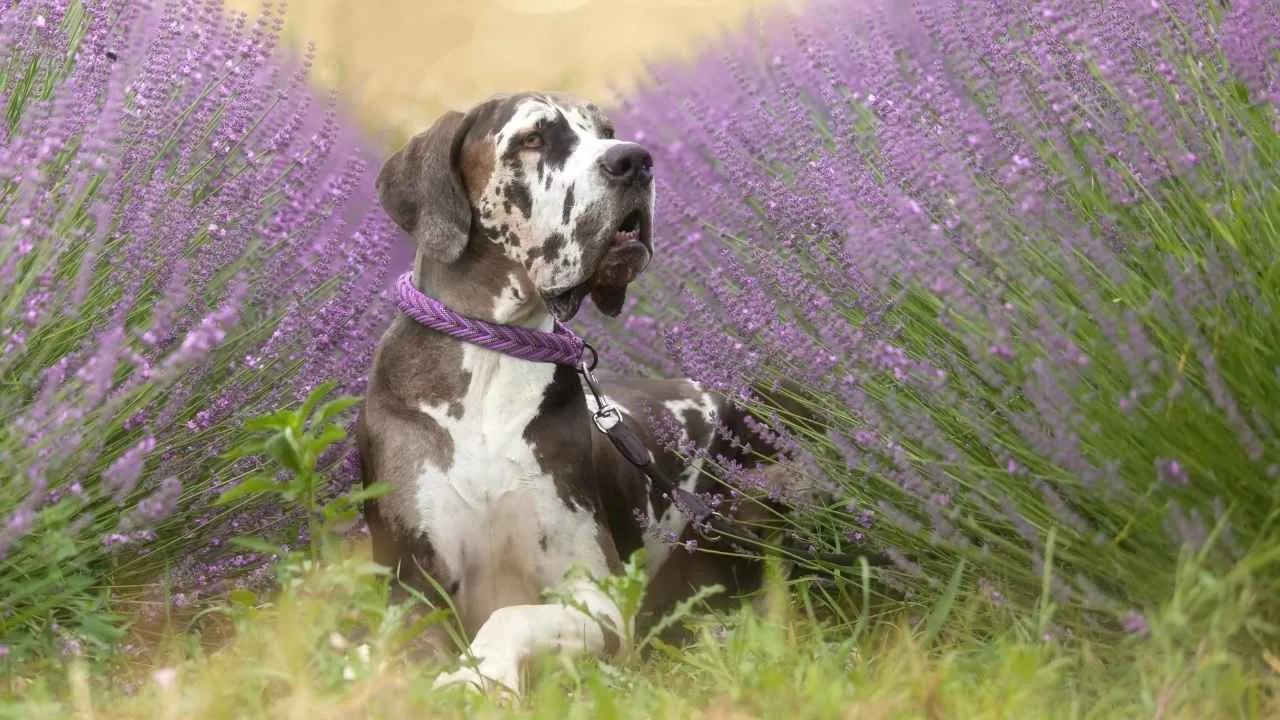
The Great Dane might look like it needs a train car of its own, but don’t be fooled—this towering breed is one of the quietest dogs you could travel with. Known as a “gentle giant,” it’s calm in crowds, graceful in movement, and surprisingly easygoing, even in tight quarters.

Patient with transitions: Whether it’s a platform pause or a long layover, Danes can wait it out with minimal fuss—no pacing, no whining, no stress.
Low vocalization: Unlike some breeds that announce every stop, Danes are generally silent travelers—barking is rare.
Gentle on a leash: Thanks to their even temperament, they’re easy to guide and lead, even through essential tight station corners.
Unique Traits
According to WebMD, they are known for hunting wild boars centuries ago; they’ve since shifted into couch-hugging, people-loving giants.
They come in several striking coat colors—from black and fawn to the distinctive harlequin.
Famously, Scooby-Doo was modeled after a Great Dane, though the real ones are much calmer.
With a shorter lifespan, it’s wise to decide early how to prioritize comfort, joint health, and mobility, especially when traveling.
7. Clumber Spaniel
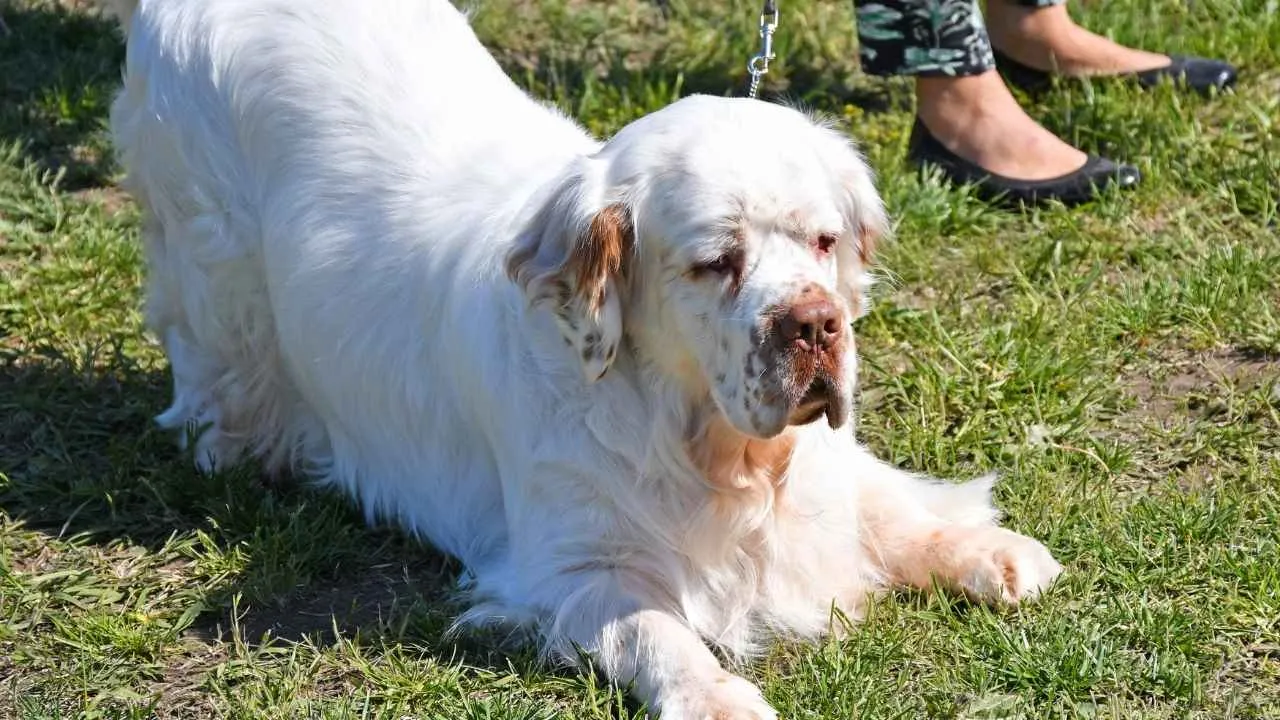
The Clumber Spaniel might not be the first dog breed that comes to mind when you’re thinking of hopping on a train, but here’s the thing—this low-slung, lumbering sweetheart was practically built for quiet travel.
With their stocky build and famously mellow temperament, Clumbers are more into sitting politely at your feet than pacing up and down the aisle.
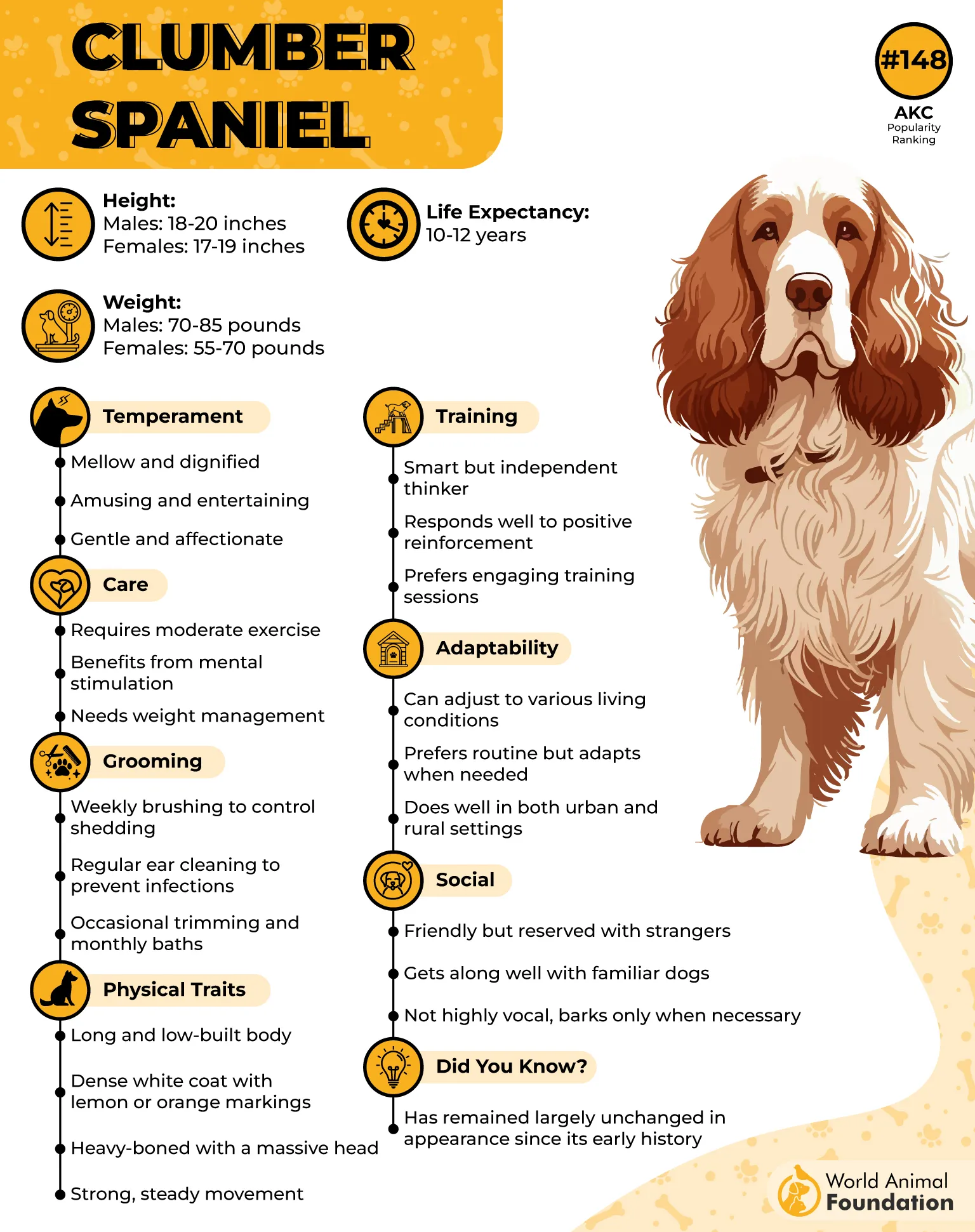
Size and Build: They’re the largest of the spaniel family—low to the ground, heavy-headed, with short legs built for balance, not speed.
Distinctive Gait: Their signature move? The “Clumber roll”—a slow, rolling walk that turns heads and softens hearts.
Coat and Color: A dense, weather-ready double coat, usually white with lemon or orange markings on the face and ears.
Unique Traits
They love to feed their retrieving instinct, often carrying toys like prized game birds. They don’t bark much and would rather trot down the aisle with a toy than chase anything.
While they were once bird dogs, they don’t demand intense activity. A short walk or a train ride? Perfect.
Generally unfazed by noise or crowds, they’re not the type to react out of fear. Their mellow energy helps them ride quietly.
8. French Bulldog
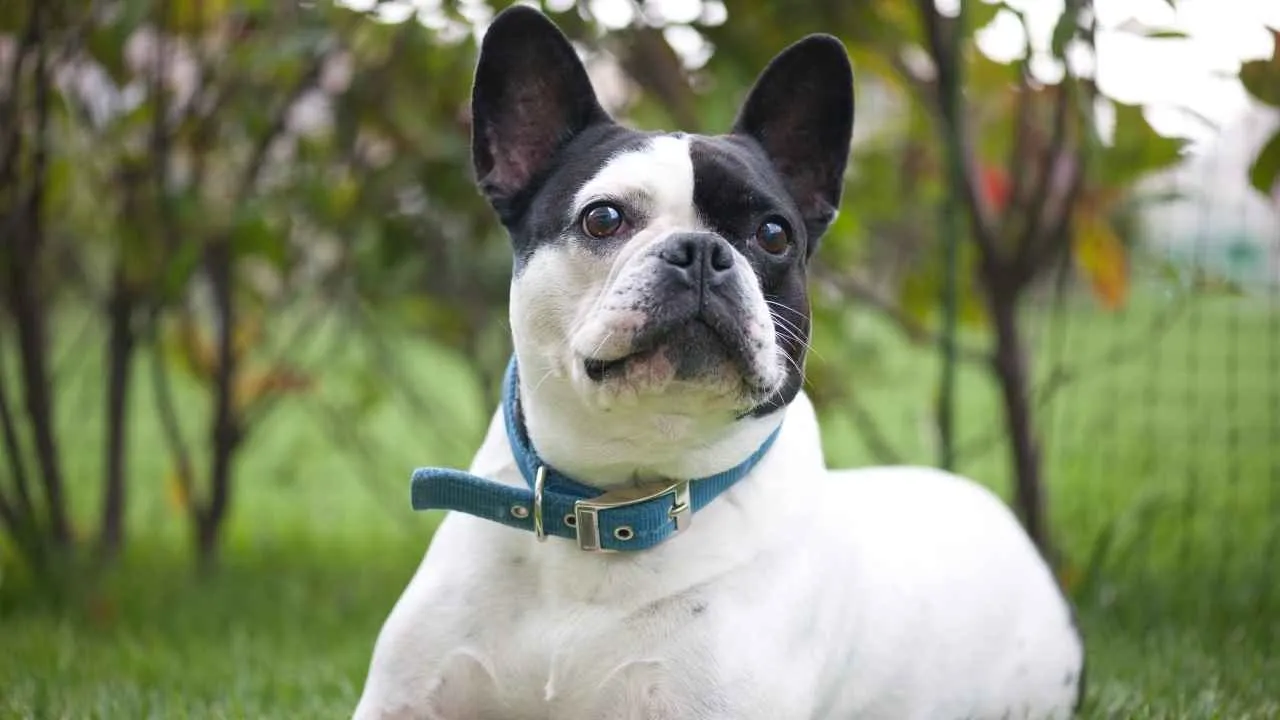
French Bulldogs aren’t just cute—they’re ideal train companions. They’re quiet, compact, and not too fussy, which makes them a popular pick for travelers who don’t want a dog that treats every stop like a personal stage.
If you’re trying to decide on a low-key breed that rides well in public without drawing unwanted attention, the Frenchie should be on your shortlist.

Quiet Communicators: They may grunt, snort, or shoot you that iconic side-eye, but barking isn’t their thing.
Adaptable: Their relaxed nature and low exercise needs mean they’ll lounge contentedly through long rides.
Born Entertainers: With their dramatic expressions and zoomies (aka the “Frenchie 500”), they’ll amuse you without disturbing others.
Unique Traits
They respond better to calm guidance than harsh corrections, so they travel best with patient owners.
Trains are usually climate-controlled, which is perfect for a breed that overheats easily.
Frenchies originally came from England. The name’s misleading, but their chill train-riding vibes are 100% real.
Their signature upright, oversized ears aren’t just cute—they’re one of the breed’s most recognizable features.
Most French Bulldogs have a naturally stubby, twisted tail that adds to their cartoonish silhouette.
9. Maltese
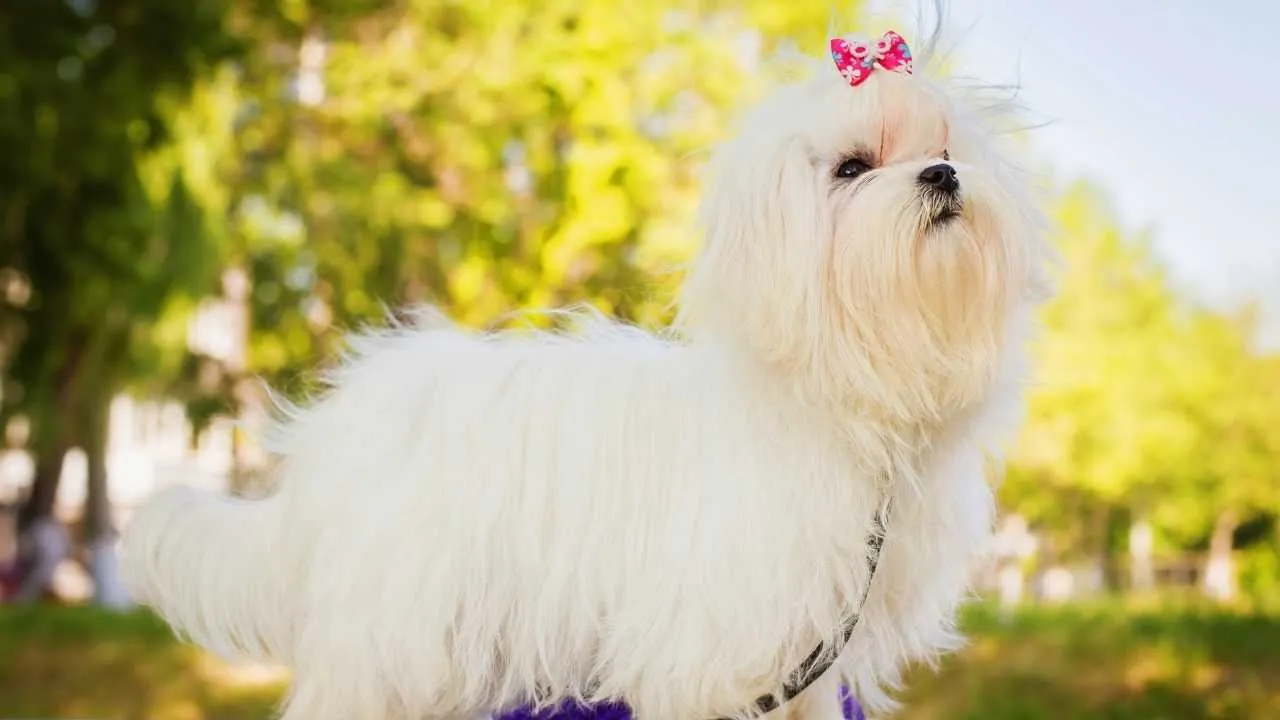
The Maltese might look delicate, but this tiny dog handles train rides like a seasoned commuter. Despite being known for their beauty and grace, they’re sturdy, smart, and surprisingly adaptable. Their quiet, composed demeanor makes them excellent travel buddies.
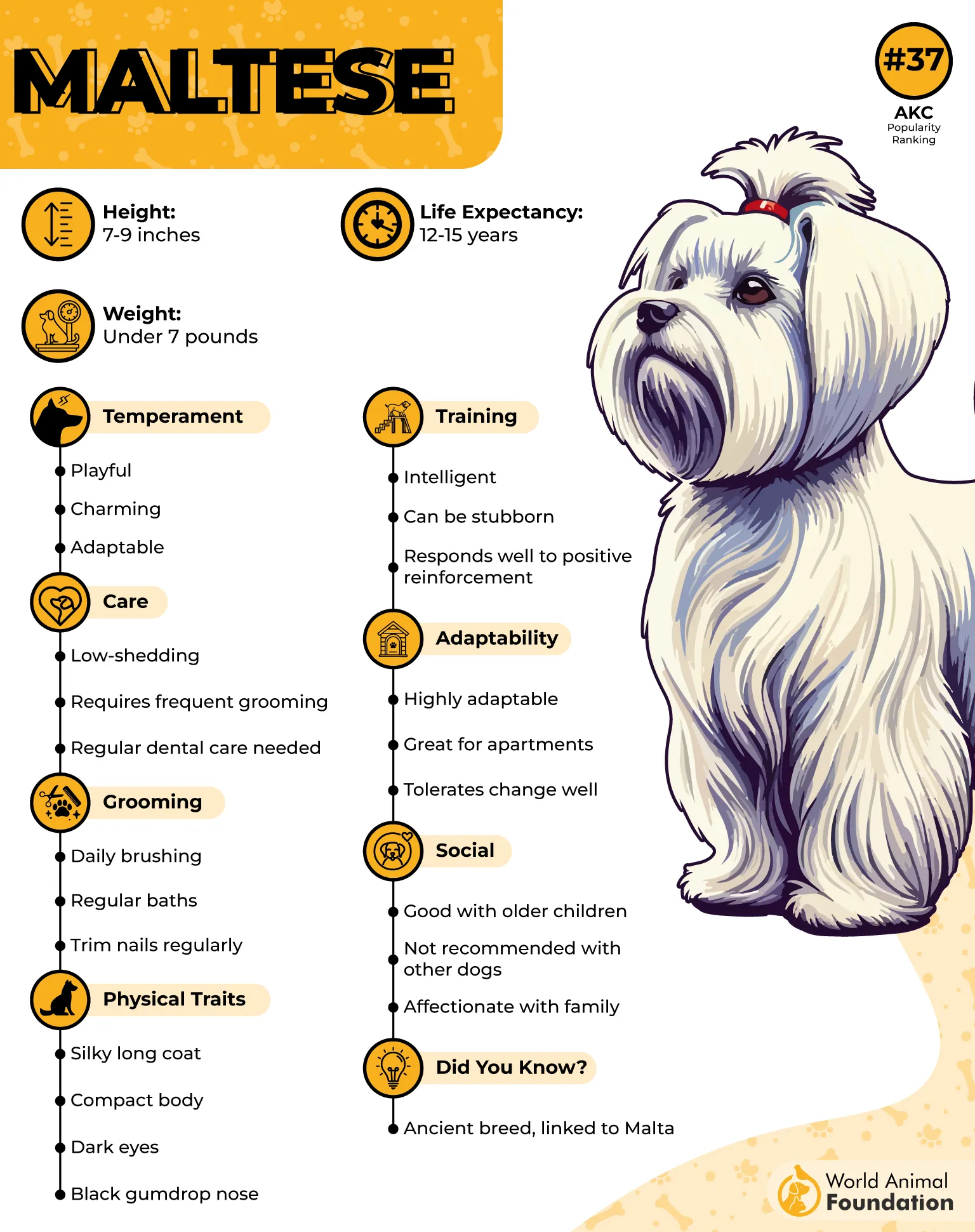
Ancient Aristocrats: The Maltese have been around for over 2,800 years and were adored by royalty in ancient Rome and Greece.
Agility Champs: Despite their dainty appearance, they love agility sports and can navigate obstacle courses with ease.
Hypoallergenic Appeal: Their coat sheds very little, making them a better option for allergy-sensitive travelers.
Unique Traits
Button-black nose and expressive, round eyes give them a distinct, doll-like face.
Their snow-white, silky coat is a single-layer, which means less shedding—ideal for allergy-sensitive travelers.
“Floating” gait—their light, graceful walk makes them look like they’re gliding.
Surprisingly agile for their size, they love hopping across train seats like they own the place.
Petite paws with a gentle touch—they rarely scratch or paw at things like larger dogs might.
Conclusion
Not every dog is cut out for a journey on rails. Some bark at every stop, others get anxious the moment the train pulls out. But the breeds we’ve covered know how to enjoy the ride without causing trouble.
What matters on the other end of the line isn’t just the destination—it’s having a dog by your side who doesn’t scare strangers, startle at new sounds, or make a scene in a packed cabin. A good travel dog respects the space, reads the room, and stays in sync with their person.
Whether you’re a first-time rider or a seasoned traveler, staying aware of your dog’s temperament makes all the difference.


